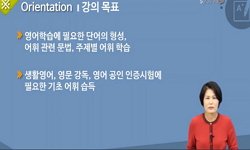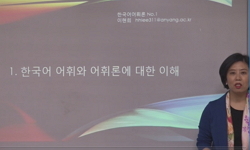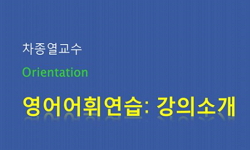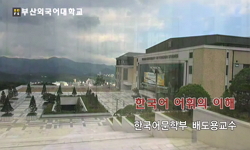이 논문은 ≪상례언해≫의 어휘를 면밀히 검토하여 정확한 의미를 파악함으로써 근대 국어 어휘사 연구에 도움을 주려는 데 그 목적이 있다. 이 논문은 조선시대 상례(喪禮)에 관한 내용...
http://chineseinput.net/에서 pinyin(병음)방식으로 중국어를 변환할 수 있습니다.
변환된 중국어를 복사하여 사용하시면 됩니다.
- 中文 을 입력하시려면 zhongwen을 입력하시고 space를누르시면됩니다.
- 北京 을 입력하시려면 beijing을 입력하시고 space를 누르시면 됩니다.
https://www.riss.kr/link?id=T12480217
- 저자
-
발행사항
경산 : 대구가톨릭대학교 대학원, 2011
-
학위논문사항
학위논문(석사) -- 대구가톨릭대학교 대학원 , 국어국문학과 국어학 , 2011. 8
-
발행연도
2011
-
작성언어
한국어
- 주제어
-
발행국(도시)
경상북도
-
형태사항
iv, 52 p. ; 26 cm
-
일반주기명
지도교수: 이은규
- 소장기관
-
0
상세조회 -
0
다운로드
부가정보
국문 초록 (Abstract)
이 논문은 ≪상례언해≫의 어휘를 면밀히 검토하여 정확한 의미를 파악함으로써 근대 국어 어휘사 연구에 도움을 주려는 데 그 목적이 있다.
이 논문은 조선시대 상례(喪禮)에 관한 내용을 모아서 언해하여 만든 책인, ≪상례언해≫를 대상으로 한다. 먼저 서지사항에 대한 연구를 제외하면 아직까지 ≪상례언해≫에 대한 분석이 전혀 이루어지지 않았다는 점에서 연구의 필요성이 제기된다. 언어 현상 연구, 특히 어휘 연구는 당시의 언어 모습을 정확히 이해하는 데 꼭 필요하며, 문헌 자체의 국어사적 가치를 드러내는 연구이기도 하다.
≪상례언해≫는 풍부한 어휘와 표기, 음운 그리고 문법 등 이전 시기 한국어의 특징을 잘 보여주는 문헌으로 그 가치가 매우 높다. 또한 조선시대 상례에 관한 내용으로 다른 문헌에는 잘 보이지 않는 상례와 관련된 어휘가 많아 어휘사 연구에 중요한 자료가 된다는 점에서 주목할 만하다. 뿐만 아니라 조선 시대 상례 제도의 상세한 모습을 보여주기 때문에 인접 학문 영역의 연구에 소중한 자료가 된다는 점에서도 중요하다.
≪상례언해≫ 이본들 중 필사본과 목판본, 방각본, 신식활자본1, 신식활자본2를 대상으로 이들을 비교하는 방법으로 ≪상례언해≫에 쓰인 어휘를 분석하였다. 기존의 옛말 사전류에 등재되어 있는 어휘, 등재되어 있지 않은 어휘, 사전에 등재되어 있더라도 의미 파악이 잘못 되었거나 사전에 잘 나오지 않는 희귀어 등으로 나누어 어휘를 살펴보았다. 분석된 결과는 다음과 같다.
첫째, 이 논문에서 다룬 ≪상례언해≫ 이본 다섯 가지는 크게 세 가지 유형으로 나눌 수 있다. 필사본과 신식활자본1의 경우 어휘 표기가 조금 다른 것을 제외하고는 언해 양상에 별다른 차이가 없고 목판본과 방각본의 언해양상이 같다. 신식활자본2는 위의 본들과는 다른 언해양상을 보인다.
둘째, 기존의 옛말사전에 새롭게 등재해야 할 어휘로는 ‘간지런’, ‘비싯’, ‘사우나’, ‘어우름’, ‘질(質)’, ‘쇄(殺)’, ‘모(冒)’, ‘사(髽)’, ‘서견(舒絹)’, ‘이금(侇衾)’, ‘수락’, ‘저락’, ‘핫이불’ 등이 있다.
셋째, 형태나 의미 분석을 새로 할 만한 어휘로는 ‘결’, ‘녛’, ‘앗다’, ‘줍푸려’, ‘임(袵)’, ‘오(襖)’, ‘은정(銀釘)’, ‘’ 등이 있다.
넷째, 옛말사전류에 표제어로 등재되어 있지만 ≪상례언해≫의 용례를 추가해야 할 어휘로는 ‘단(袒)’, ‘면(免)’, ‘슉’, ‘견양’, ‘멱건’, ‘멱목’, ‘몸픠’, ‘부(附)’, ‘삭장’, ‘저장’, ‘곡하다’, ‘진애하다’ 등이 있다.
이 문헌의 어휘 연구는 근대 한국어 어휘 연구와 나아가 근대 한국어 사전 편찬에도 큰 도움을 줄 수 있을 것으로 본다.
다국어 초록 (Multilingual Abstract)
The purpose of the research is to grasp language situations of Sangryeeonhae, particularly making a virtue of necessity in modern Korean word research with investigating vocabulary thoroughly and understand the exact meaning of it. This thesis is...
The purpose of the research is to grasp language situations of Sangryeeonhae, particularly making a virtue of necessity in modern Korean word research with investigating vocabulary thoroughly and understand the exact meaning of it.
This thesis is aiming at Sangryeeonhae, which is a book done by gathering contents of The Joseon Dynasty period’s Sangrye(喪禮). Firstly, this poses the research’s necessity, because there are not many analysis done for Sangryeeonhae. The study of language phenomenon, especially the research of word is necessary to understand those days language figure and also to reveal the Korean’s historical value in the literature itself.
Sangryeeonhae is a high valued literature, which shows an extensive vocabulary, phoneme and grammar of previous period’s Korean feature. Additionally, it is very noticeable because it contains important information for the lexicon research with contenting The Joseon Dynasty period’s Sangrye, which it cannot be found easily in other studies. Also, because this shows the use of a word through examples of The Joseon Dynasty period Sangrye’s system in detail, it may be an important point for adjoining learning fields.
Among Sangryeeonhae, this compares and analysis the manuscription, wood book, block book, new-style type printing book1 and new-style type printing book2 and figures out the words used in Sangryeeonhae. Also, examined conscientiously about the words which are existing and not existing in old word dictionaries, wrong word meanings if it has been recorded and rare vocabulary. Will conclude with summarizing the results of the examination.
The main results of this study are as follows; First, in Sangryeeonhae’s five different version, it can be divided into three categories. With the cases of manuscripiont and new-style type printing book1, there are not much differences except aspects of Korean annotation of Chinese classics and wood book and block book’s Korean annotation of Chinese classics is similar. new-style type printing book2 shows different conditions with the above copies.
Secondly, there are vocabulary which has to be included in existing in old word dictionaries and those are ‘간지런’, ‘비싯’, ‘사우나’, ‘어우름’, ‘질(質)’, 쇄(殺)’, ‘모(冒)’, ‘사(髽)’, ‘서견(舒絹)’, ‘이금(侇衾)’, ‘수락’, ‘저락’, ‘핫이불’
Third, words which has worth to be researched of the from and meanings are ‘결’, ‘녛’, ‘앗다’, ‘줍푸려’, ‘임(袵)’, ‘오(襖)’, ‘은정(銀釘)’
Forth, it has been recorded on old word dictionaries, but word of ‘단(袒)’, ‘면(免)’, ‘슉’, ‘견양’, ‘멱건’, ‘멱목’, ‘몸픠’, ‘부(附)’, ‘삭장’, ‘저장’, ‘곡하다’, ‘진애하다’ has to be newly included in Sangryeeonhae.
This literature's word research will be a big chance for further studies of modern Korean word examination.
목차 (Table of Contents)
- Ⅰ. 서론 1
- 1.1. 연구 목적 1
- 1.2. 선행 연구 검토 1
- 1.3. 연구 대상 및 방법 2
- Ⅱ. 서지 분석 5
- Ⅰ. 서론 1
- 1.1. 연구 목적 1
- 1.2. 선행 연구 검토 1
- 1.3. 연구 대상 및 방법 2
- Ⅱ. 서지 분석 5
- 2.1. 편찬 경위 5
- 2.2. 기본 체재 8
- 2.3. 서지 비교 8
- Ⅲ. 어휘 분석 20
- 3.1. 단일어 20
- 3.1.1. 옛말 사전에 수록 안 된 단일어 20
- 3.1.2. 옛말 사전에 수록되어 있되 어형·의미 파악이 잘못된 단일어 30
- 3.1.3. 옛말 사전에 수록되어 있는 희귀 단일어 33
- 3.2. 복합어 40
- 3.2.1. 옛말 사전에 수록 안 된 복합어 40
- 3.2.2. 옛말 사전에 수록되어 있되 어형·의미 파악이 잘못된 복합어 44
- 3.2.3. 옛말 사전에 수록되어 있는 희귀 복합어 45
- Ⅳ. 결론 47
- 참고자료 49
- 참고문헌 49












